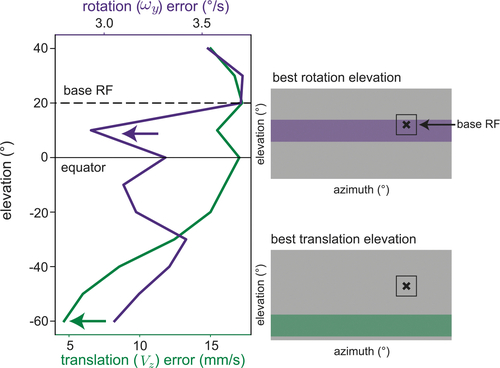Fig. 7
- ID
- ZDB-FIG-230511-45
- Publication
- Alexander et al., 2022 - Optic flow in the natural habitats of zebrafish supports spatial biases in visual self-motion estimation
- Other Figures
- All Figure Page
- Back to All Figure Page
|
Spatially varying resolution of the front end of the sensory system can shift rotation bias
Beginning with the compound swimming setting in Figure 5, we modified our sparsity model to increase sample probability by a factor of 4 in the upper visual field, as a proxy for higher retinal resolution. In this setting, a base receptive field located at 20° elevation (black dashed line) and 90° azimuth is better paired with another upper field RF for rotation (purple arrow) while still benefiting from a lower field partner for translation (green arrow). Compare with Figure 5D in which both types of motion estimation show lower error in the lower field. Spatial variations in anatomical resolution may be responsible for a slight upper field bias observed in rotation responses in the larval zebrafish. |

